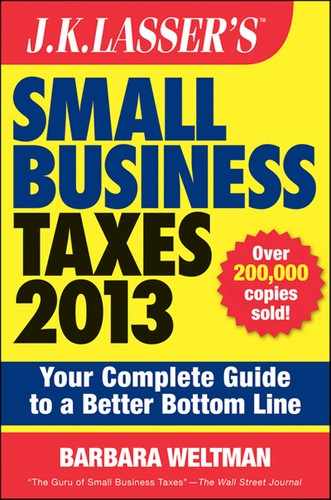Common Errors and How to Avoid Them
The IRS has identified the most common errors that businesses make on their returns. Having 1 or more of these errors can trigger a closer look by the IRS, which is something you want to avoid. The most common error is failing to sign the return. Here are 25 of the most common errors on income tax, employment tax, and other returns:
Also pay special attention to include the following areas.
Salary of Corporate Officers
Some corporations have been claiming deductions for management or consulting fees paid to the corporation’s owners. At the same time, these corporations have not claimed deductions for salary. This leads the IRS to conclude that the corporations are misclassifying payments to corporate officers as fees rather than compensation in order to avoid payroll taxes. Corporations may be liable for penalties for failing to withhold and deposit payroll taxes and for failing to file required payroll tax returns. Of course, sometimes payments to shareholders may very well be management or consulting fees for occasional outside assistance. But if these individuals conduct the actual business of the corporation—perform the services for which the corporation was organized or provide management services on a full-time or consistent basis—the payments look more like compensation.
S corporations especially may also fail to deduct compensation paid to owner-employees and instead call distributions to them dividends. The rationale for this strategy is to reduce the corporation’s liability for payroll taxes. Again, the IRS has identified this strategy as a common error and has imposed penalties on S corporations that have followed it. If an owner-employee performs substantial services for the S corporation, some reasonable amount of payment for services must be treated as deductible compensation subject to payroll taxes.
Below-Market Loans
Loans from shareholders to their corporations that bear an interest rate lower than the applicable federal rate (a rate set monthly by the IRS, which varies with the term of the loan) result in phantom or imputed interest. Shareholders must report this interest; corporations can deduct the imputed interest. If the corporation fails to take an interest deduction, the IRS may conclude that the shareholder has not really made a loan but rather a contribution to the capital of the corporation, and no deduction for the corporation will be allowed.
Loans to shareholders from their corporations may also present tax deduction problems. Shareholders are entitled to deduct imputed interest in this case (as business or investment interest), with the corporation picking up the imputed interest as interest income. Unfortunately, some corporations are failing to report the income, but they are still showing the loan on their balance sheets. This is an unnecessary error for corporations to make. If the shareholders are also employees of the corporation, then the corporation can claim a deduction for compensation to the shareholder-employees to offset the imputed interest income. If, however, the shareholders are not employees of the corporation, the payments to them must be treated as dividends, which are not deductible by the corporation.
Travel and Entertainment Deductions
Some businesses claim a full deduction for business meals and entertainment. They do not correctly apply the 50% limit on these deductions. This problem commonly occurs for meals and entertainment away from home.
Bad Debt Deductions
Some individuals are claiming bad debt deductions as ordinary losses rather than short-term capital losses. In other words, they are classifying the bad debt as a business bad debt when, in fact, it may be a nonbusiness bad debt. For example, if a shareholder has a bad debt for a loan to the corporation, the loan should be treated as a nonbusiness bad debt because it is not incurred in a trade or business; rather, it is made to protect one’s investment as a shareholder.
Casualty Losses
Some businesses fail to reduce deductions for casualty losses by any insurance reimbursements received. This results in an overstatement of casualty losses.
Claiming Losses in General
Some taxpayers claim losses in excess of amounts that are otherwise allowed. They fail to observe the passive loss limitation rules that limit loss deductions for activities in which there is no material participation. Just because someone owns stock in an S corporation, for example, does not mean that he or she is a material participant in the business. The shareholder must meet special material participation tests to deduct losses in excess of passive income.
Other taxpayers may be deducting hobby losses in excess of income from this type of activity. While income from a hobby-type activity is fully taxable, losses are deductible only to the extent of income from the activity.
Also, some shareholders in S corporations claim losses in excess of their basis in the corporation. Losses are deductible only to the extent of a shareholder’s basis in stock and loans to the corporation. Basis is adjusted annually for various transactions—shareholder’s distributive share of S corporation income that is taxable to the shareholder, distributions by the corporation, and losses claimed. Losses in excess of basis are not lost. They can be carried forward and used in a subsequent year when there is sufficient basis to offset them. Important: States may have different rules on the treatment of losses.
